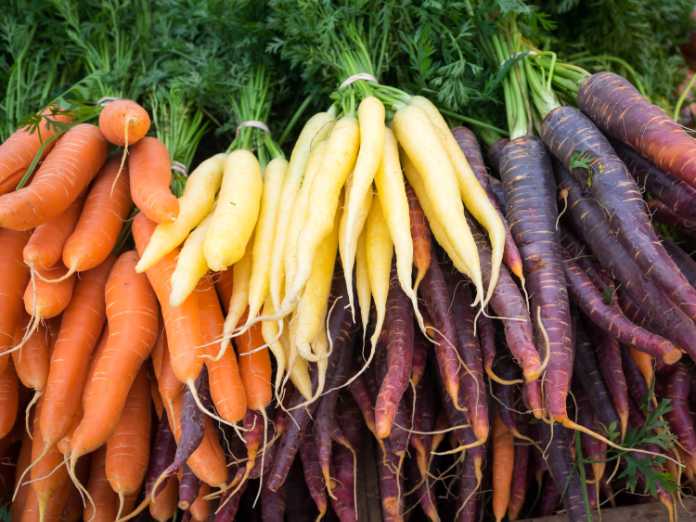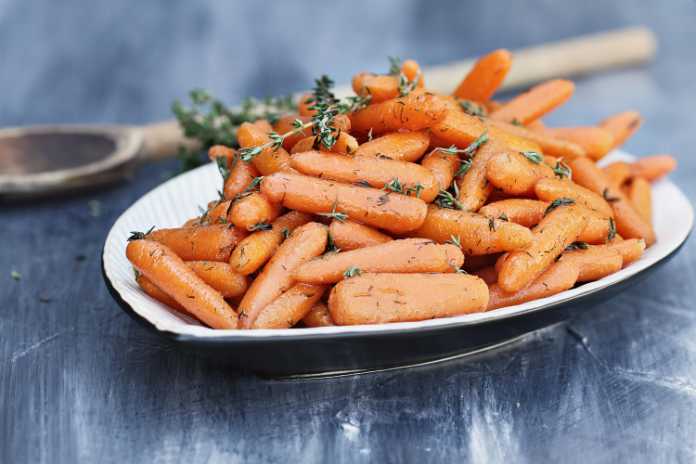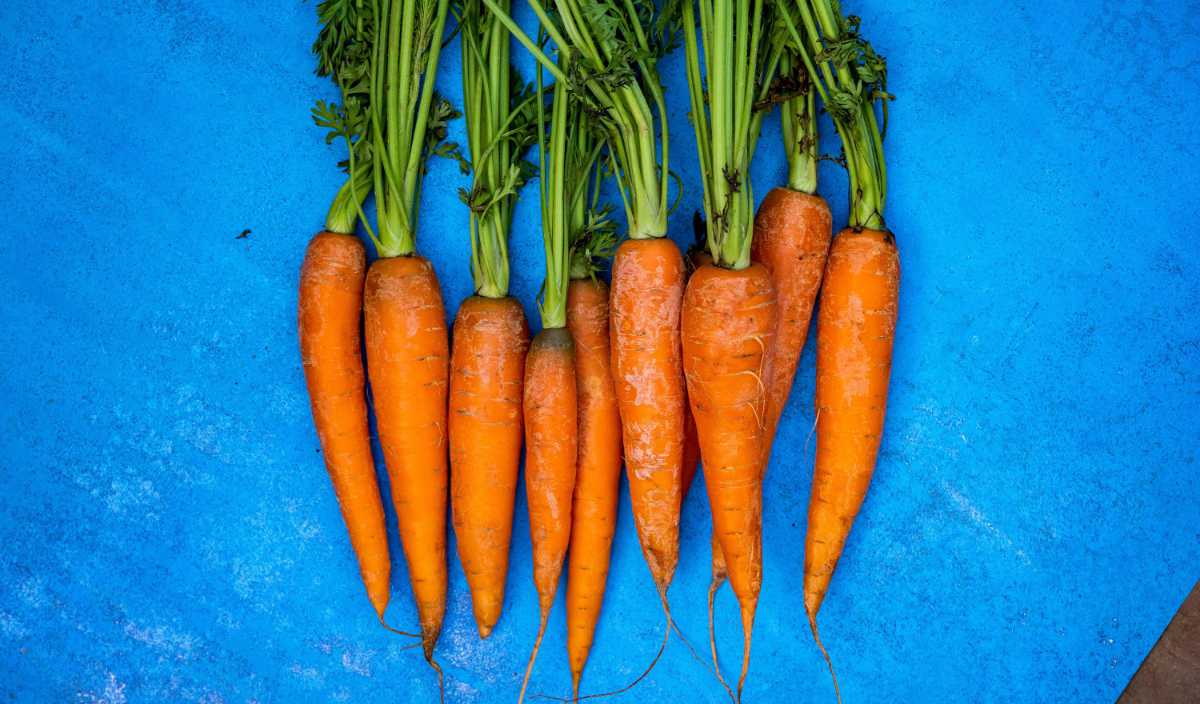From crunchy raw sticks dipped in hummus to steaming slices drenched with melted butter, and fluffy cake smothered in cream cheese frosting, carrots are delicious in many guises – and they’re packed with nutrients too.
It’s only right, then, that we celebrate Bugs Bunny’s favourite vegetable, with International Carrot Day on April 4.
But there’s more to the popular root vegetable than just tasty dishes. Carrots have a fascinating – and somewhat controversial – history.
9 carrots facts
To mark the annual event, here are nine fascinating facts you probably didn’t know about carrots…
1. Carrots weren’t originally orange

The carrots sold in supermarkets are almost exclusively orange, but the earliest documented plants produced purple, yellow or white varieties.
There’s some dispute about whether Dutch horticulturalists bred orange carrots in the 16th century to honour of William of Orange (the man who led the Dutch quest for independence), but whatever the reason, the new colour became dominant. You could say, back then, orange was the new purple…
2. They originate in Asia
Now popular worldwide, the carrot as we know it today was first grown in Afghanistan in the 10th century. The first reference to the veggie being grown in the UK on a field-scale was in Somerset in the 1600s.
3. There’s a huge range of carrot varieties
View this post on Instagram
Today, there are hundreds of types of carrots varying in colour and size. And they’ve got some rather unusual names, such as Solar Yellow, Red Elephant, Purple Dragon, Five-Star Baby and Little Fingers.
4. Baby carrots are (mostly) fake

The bags of smooth, peeled, uniformly shaped ‘baby’ carrots you see in supermarkets are usually cut from full-size carrots for the convenience of shoppers.
However, genuine baby carrots – harvested before they reach maturity – do exist. You can identify a true baby if it’s got its skin on, and a defined ‘shoulder’ section at the top.
5. Carrots are mostly water
While they’re brilliantly bright in colour, carrots are made up of 88% water, which is why old, dried out carrots lose their crunch.
6. They might help you see in the dark
The old adage about carrots helping you see in the dark is said to have come about during the World War II, when the UK’s Ministry of Food wanted the public to believe the success of night-time air raids was down to pilots’ munching lots of the veggies, which are rich in a nutrient called beta-carotene.
However, it’s not quite as simple as that. Beta-carotene has been shown to help improve night vision, but only in people who have a vitamin A deficiency, which is unlikely nowadays in developed countries.
7. Cooking carrots makes them healthier
View this post on Instagram
Beta-carotene is used by the body to make vitamin A, an important nutrient in terms of vision, skin health and the immune system. While some nutrients (such as vitamin C) can be lost through cooking, a study found that cooked carrots, rather than raw ones, actually led to higher absorption of beta-carotene.
8. Eat too many, and you may turn yellow
As you might expect, consuming large quantities of carrots won’t turn you orange. It could, however, results in carotenemia, when an excess of beta-carotene gives the skin a yellow-ish tinge.
9. There’s an annual carrot festival
View this post on Instagram
The city of Holtville in California, where carrots are a major agricultural crop, has declared itself the Carrot Capital of the World. In February, residents celebrated the 75th anniversary of the city’s annual Carrot Festival, which included a carnival and parade.
Best-selling carrot seeds
Interested in growing your own carrots? Check out our list of best-selling carrot seeds!
- Grow your own vegetables
- This seed produces blunt ended carrots with excellent flavour
- Grow your own vegetables
- Grow your own Carrots from seed! There is nothing better than Growing Your Own Carrots and Seeds are a traditional favourite, producing large, late maturing carrots packed with vitamin A.
- Suttons Carrot Seeds Autumn King 2 will thrive in beds and borders or in a greenhouse. Sow thinly direct into finely raked, moist, warm soil. Sowing to cropping in 22 to 26 weeks. Maximum height and...
- Easy to grow, Carrot Seeds Autumn King 2 are hardy -6 to -10 degrees Celsius. Sow March to July and harvest delicious homegrown carrots late August to December. Protect from Carrot Fly with barrier...
- VERSATILE VEGETABLE FOR BOILING, ROASTING & SALADS: From field to fork in under 4 months! For hearty root vegetables to grow in the garden, look no further than carrots. This Early Nantes variety or...
- FROM FIELD TO FORK IN 4 MONTHS: Plant outdoors or indoors in troughs, containers or beds to cultivate tasty carrots, one of the earliest carrot varieties to plant in the year. This carrot seed variety...
- HOW TO PLANT: Soak your carrot seeds in water before you sow. Broadcast or scatter sowing works well for planting carrot seeds or spread evenly with 15cm between seeds. Cover with around 3cm of soil...
- Richly coloured, high in natural sugars
- Chentanay type, bred for heavy and poor soils
- Excellent source of Vitamin A and Antioxidants
- Dig or till the carrot bed deeply when the soil is on the dry side to avoid making lumps. Work the soil to a fine texture 15-25 cm (6-10 in.) deep to allow the carrot roots to grow long and shapely....
- Sow seed thinly in rows, 1 cm (1/2 in.) deep, 30-40 cm (12-16 in.) between the rows as soon as the danger of hard frost has passed. Try to get about 4 seeds per 2 cm (1 in.).
- Thin to 16-20 carrots per 30 cm (1 ft.) for fresh eating whilst small and 6-10 carrots per 30 cm (1 ft.) for mid season crops, depending on the root size you want, and keep weeded and watered.
Last update on 2024-03-30 / Affiliate links / Images from Amazon Product Advertising API
You may be interested in…
This article may include affiliate links to products and services where we may receive a small fee to support the running of this site if you make a purchase or is a sponsored article from one of our select editorial partners providing valuable advice and information to our readers.












































































